HMS Onslow (DD-1940)
HMSAS Protea (DD-1941)
Back to Commonwealth Ships
List
As with all long term RN destroyer designs, various upgrades, shortages and
other factors determined what each member of a class may look like. The O-P then
Q-Z and beyond destroyer types provided all of the 'War Emergency Destroyers'. These were
produced in three main batches. The first series (O&P) ships were copies of the
later I class with either 4.5 twins or 4" twin turrets of the kind fitted to the
Hunt class. The follow on Q-Z+ units were of a size with the J-N class DD's and
had similar armaments.

The Onslow was fitted with the first twin 40mm Hazemeyer mount as copied and
improved from those received through the Dutch Navy in July 1940. Other
armaments fitted in 'B' position were: twin 6 pounder, single 40mm/L70, single
2pounder, twin 20mm, quad 0.5" machine guns, Hedgehog spigot mortar, and
practically anything else available at the time of commissioning. The twin 40mm
Hazemeyer mount proved to be too heavy for 'B' position and was removed and
replaced with a twin 6 pounder in mid 1941. Most units had the Hedgehog mounted
either side of the bridge superstructure as shown above on Onslow.

The steel and weapons shortage of 1941 affected the O&P classes with half the P
class having to be fitted with twin 4" in place of the 4.5". Both classes were
fitted with two sets of quadruple 21" torpedo tubes. Some members lost a set of
torpedoes, removed in 1944-45, when they were converted to Radar Pickets.
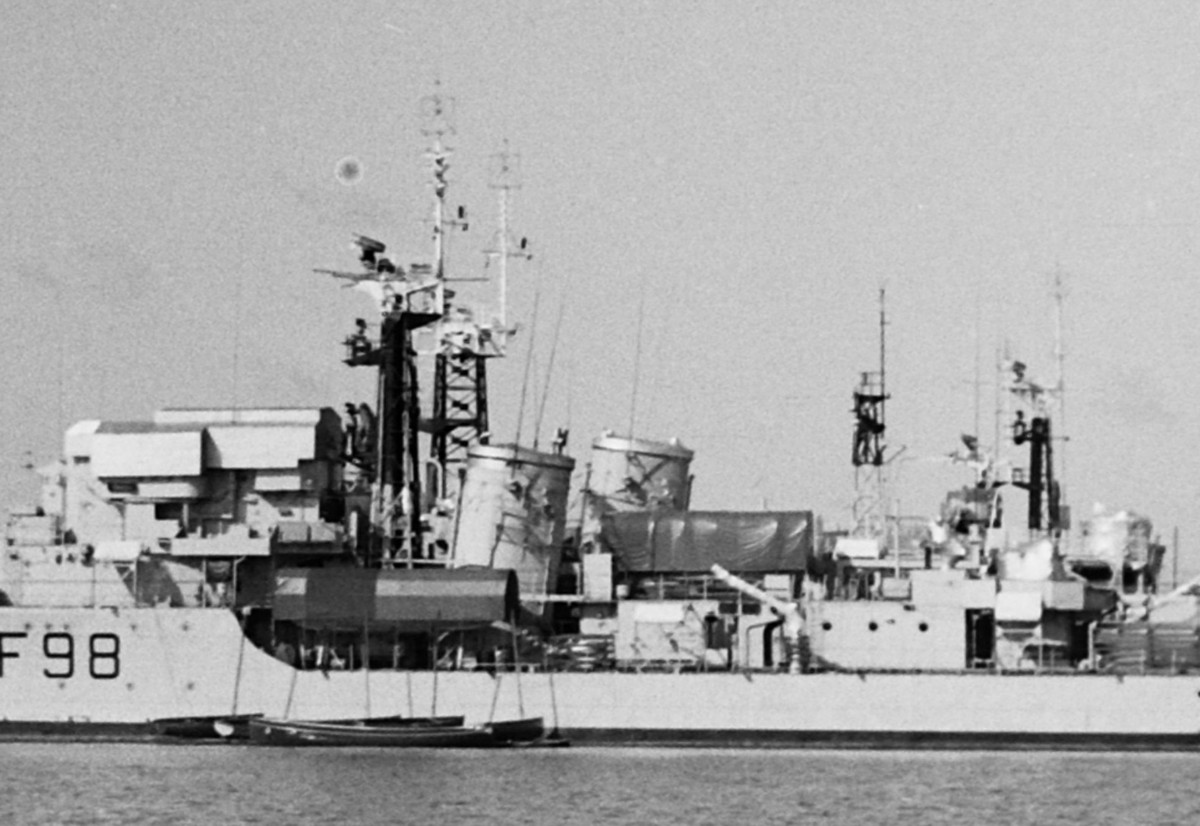
HMS Orwell and HMS Obdurate converted to Radar Pickets during the mid to late
1940's. They, and the ships converted to Type 16 Frigates, lasted in service
through to the late 1960's.
Service history of HMS Onslow
Attached to the Home Fleet,
Onslow served mostly as an escort to Arctic convoys as Escort Commanders
ship. She also saw detached service in the Mediterranean during "Operation
Harpoon" in 1942, and in the English Channel before and after the Normandy
landings in mid-1944. Her most notable action was at the Battle of the Barents
Sea in 1942, while escorting Convoy JW 51B to Russia. The convoy escorts held
off attacks from the powerful German cruiser
Admiral Hipper, with
Onslow being heavily damaged and her captain, Robert Sherbrooke, severely
injured.
In November 1945 she was the headquarter ship for Operation Deadlight, helping
move U-boats from Loch Ryan for scuttling off Bloody Foreland. She returned to
the reserve at Devonport in 1947. In August 1947 she was a submarine target ship
and anti-submarine trials ship at Portsmouth.
Decommissioned in October 1947, the ship was procured by the Pakistan Navy in
1949 and commissioned as
PNS
Tippu Sultan. In 1954 she underwent a refit at Malta. Between 1957 and
1959 she underwent conversion to a Type 16 frigate at Birkenhead. She served in
the Pakistan Navy until 1979.
| Displacement |
1850 tons standard, 2600 tons full load. |
| Length |
345 ft |
| Breadth |
36 ft |
| Draught |
14 ft |
| Machinery |
2 shaft Steam turbines, 36,000shp |
| Speed |
35 knots |
| Range |
5000 miles at 15 knots |
| Armament |
4.5" Onslow
4 x 4.5" (2x2)
2 x 40mm Hazemeyer (1x2)
4 x 2pd (1x4)
8 x 20mm (4x2) |
4" Petard
4 x 4" (2x2)
2 x 6pd (1x2)
4 x 2pd (1x4)
8 x 20mm (4x2) |
| Torpedoes |
8 x 21" (2x4) |
8 x 21" (2x4) |
| Complement |
190 |
190 |
| Notes |
|
Real O&P class Destroyer types with original armaments.
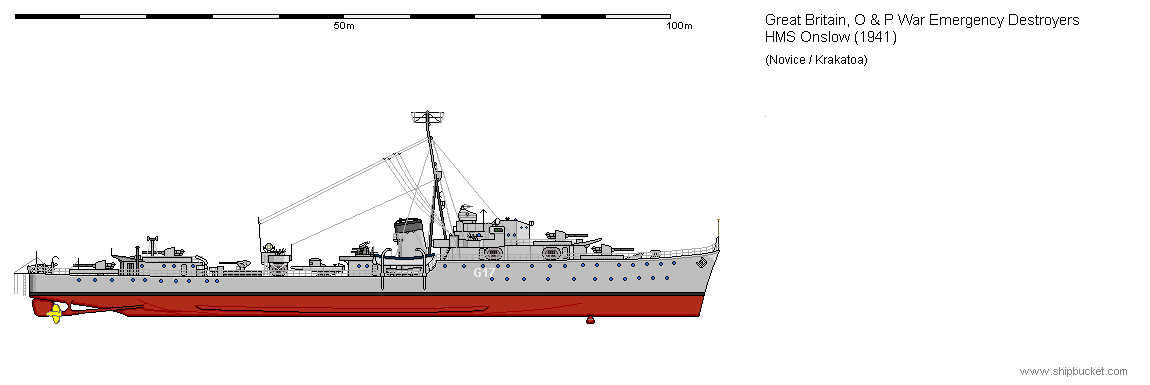
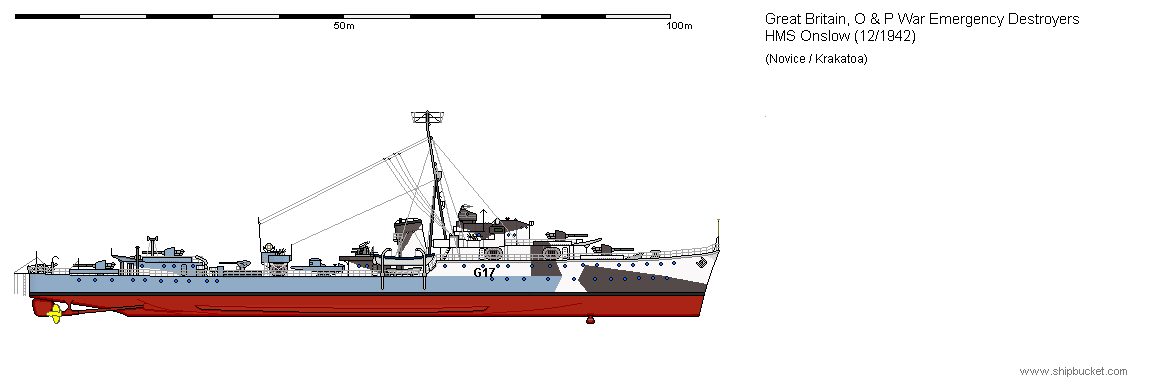
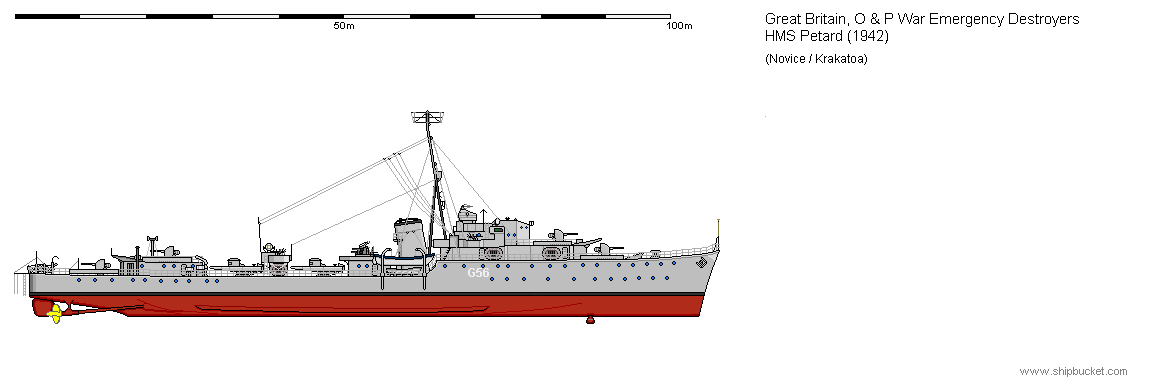
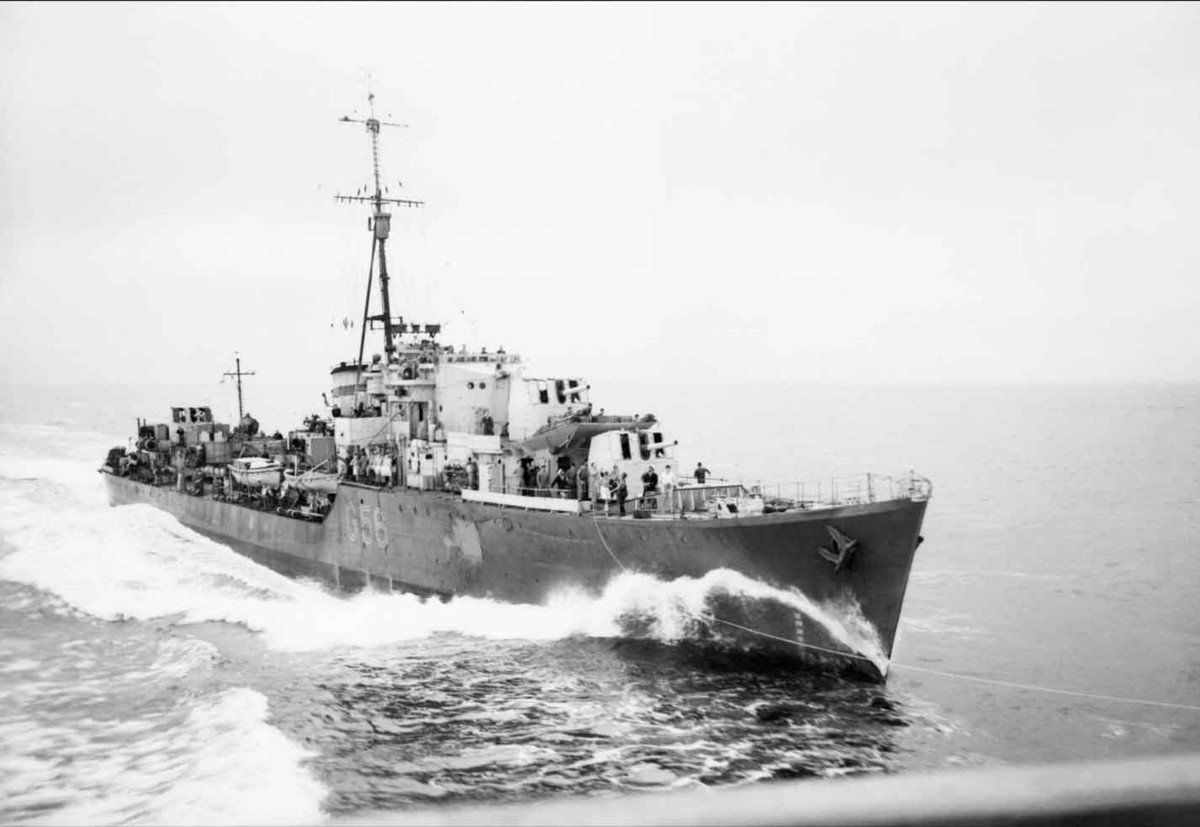
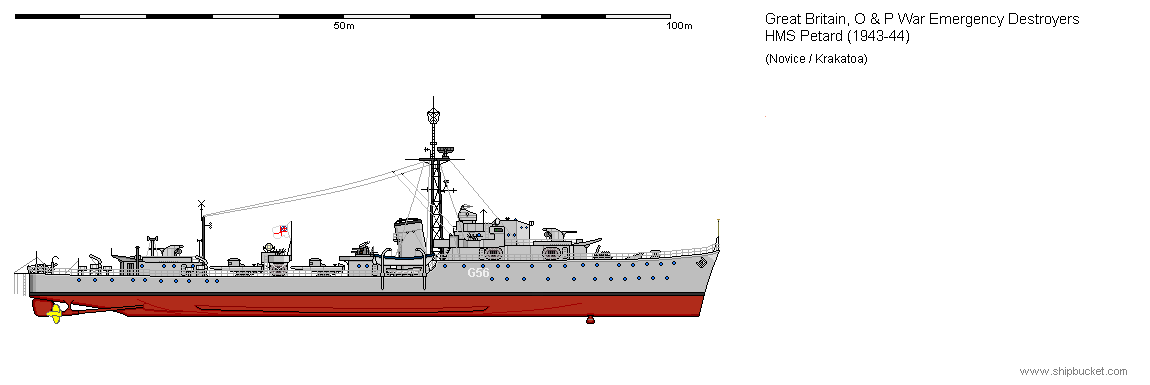
Back to Commonwealth Ships
List







